Choosing a suitable yarn or cord fibre for your crochet rug can sometimes be challenging. How the rug looks and feels when finished are only 2 of the factors involved in choosing the right yarn for your needs.
When choosing a yarn or cord for your crochet rug, you may also need to consider cost, maintenance, function, crochet comfort, and environmental impact.
Knowing which of these factors are priorities will help you decide which fibre to use for your crochet rug.
Are you on a budget? Is price the most important factor?
Is it essential that you use a fibre that is environmentally friendly or sustainable?
What about maintenance? Will the rug need regular washing if you have kids and pets?
Think about your priorities then read through the pros and cons of each fibre. I have given my recommendations for different priorities at the end.
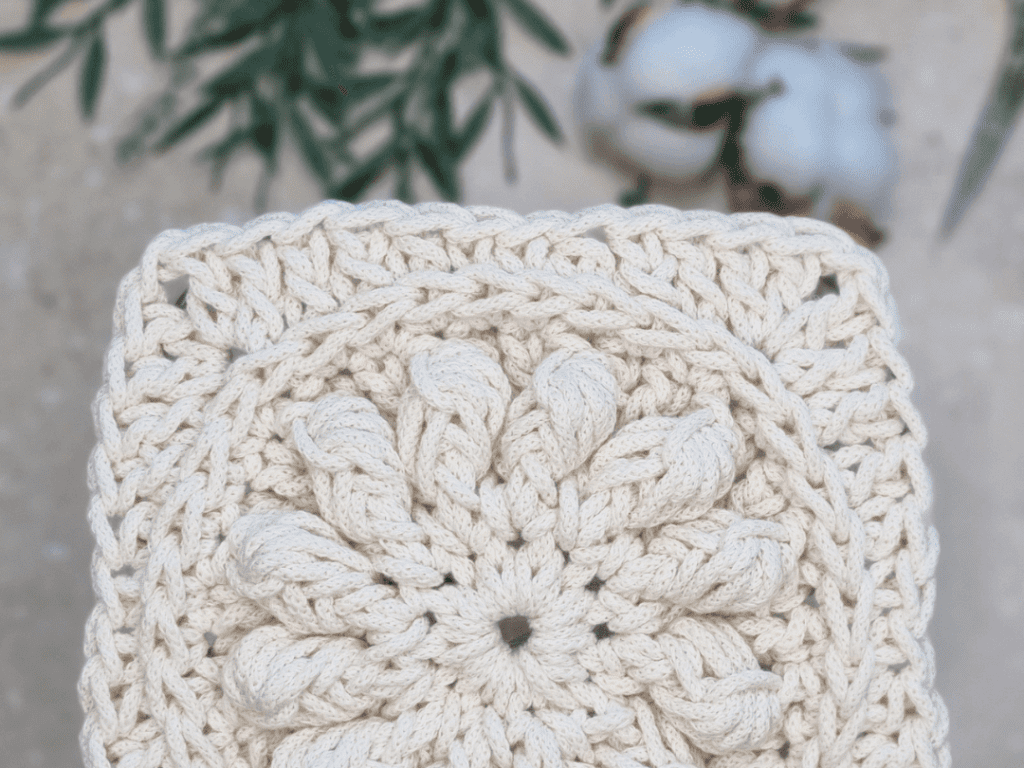
Great Stitch Definition: Cotton yarn or cord is smooth without any ‘fuzz’ or pilling once in use.
Absorbent: Making it ideal for bath mats.
Washable: Cotton rugs can be easily machine or hand washed.
Hypoallergenic: Cotton is less likely to cause skin irritation or allergies making it a good option for people with sensitive skin.
Durable: Cotton is a strong and sturdy fiber, which means rugs crocheted with cotton yarn or cord can withstand frequent washing and everyday use.
Neat: Cotton cord has a heavy drape when used for a crochet rug which helps to maintain the rug’s neat appearance without requiring frequent adjustments.
Braided or Twisted: You can purchase cotton cord as a more durable braided cord or a cheaper twisted cord.
Variety: Cotton offers a wide variety of yarn weights (thickness) and colours.
Eco-friendly Options: Cotton is a natural fibre that allows the opportunity to use organic and regenerated options available.
Expensive: High-quality cotton cord can be more expensive than synthetic alternatives like acrylic yarn. Using 2 strands of thinner cotton yarn may cost less than a cotton cord.
Heavy: While the cotton cord’s weight helps the rug stay in place, it does also mean that the finished rug can be quite heavy, especially when using a 5 mm cord or thicker.
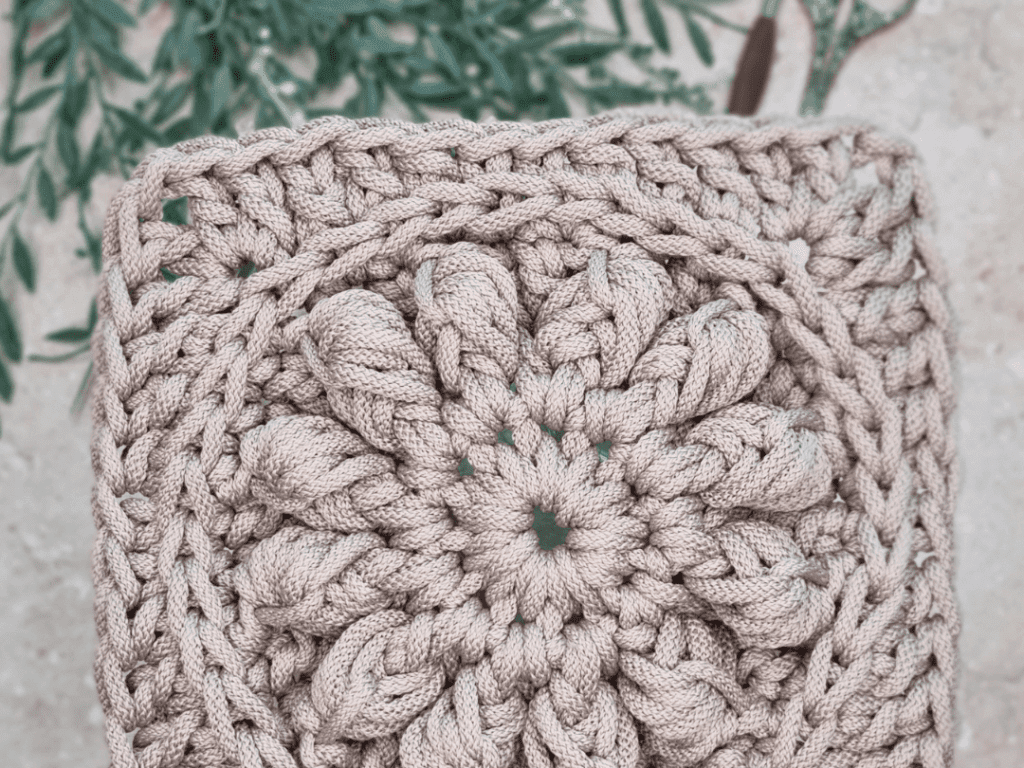
Affordable: Polyester yarn is generally more affordable than natural fiber yarns like cotton or wool, making it a budget-friendly option for crochet projects.
Durable: It is a durable synthetic material, which means crocheted items made from polyester yarn tend to be long-lasting and resistant to wear and tear.
Fade-Resistant: Polyester is a durable synthetic material, which means the colour of crocheted items made from polyester yarn tends to last longer.
Negative Environmental Impact: Polyester is a petroleum-based synthetic material and is dependent on non-renewable resources and contributes to plastic pollution. It is also non-biodegradable.
Expensive: A good quality braided polyester cord can be expensive to use for a crochet rug due to the large quantities needed.

Cost-Effective: Acrylic yarn is a cheap choice for large projects such as crochet rugs.
Wide Colour Choice: You can find almost any shade you desire, allowing you to create eye-catching and colorful rugs.
Machine Washable: Acrylic yarn is low-maintenance and makes it ideal for rugs that might need frequent cleaning, as you can simply toss them in the washing machine.
Durable: Acrylic can withstand wear and tear, making it suitable for high-traffic areas like living rooms or entryways.
Fade-Resistant: Unlike some natural fibers that might fade over time when exposed to sunlight, acrylic yarn is generally more resistant to fading, ensuring your rug maintains its color vibrancy for longer.
Less Stitch Definition: Acrylic yarn has an inherent ‘fuzz’ to the yarn reducing the smoothness of the fibre and the crochet stitches.
Pilling: Acrylic can be susceptible to pilling, affecting the appearance of the rug.
Low Melting Point: Compared to natural fibres, acrylic has a lower melting point. Keep it away from high heat sources to avoid accidental melting or damage.
Non-Biodegradable: Some people might prefer to avoid synthetic materials because it doesn’t break down naturally over time like natural fibers do.

Comfortable: Wool is naturally soft and comfortable underfoot, making it pleasant to walk or sit on. It provides a warm and cozy feeling, especially during colder months.
Environmentally Friendly: Wool is biodegradable and renewable, making it an environmentally friendly choice compared to synthetic fibers.
Strong and Resilient: It can withstand heavy foot traffic without showing signs of wear as quickly as some other fibres.
Less Stitch Definition: Wool isn’t a smooth yarn and won’t give the same smoothness that cotton cord or yarn does.
Expensive: Wool yarn is more expensive than man-made fibres due to the time and labour costs involved in producing it.
Thin: Wool yarn usually only comes in a yarn weight that will require using 2 or 3 strands when crocheting a rug. This will increase the amount of yarn needed to crochet a rug big enough to use.
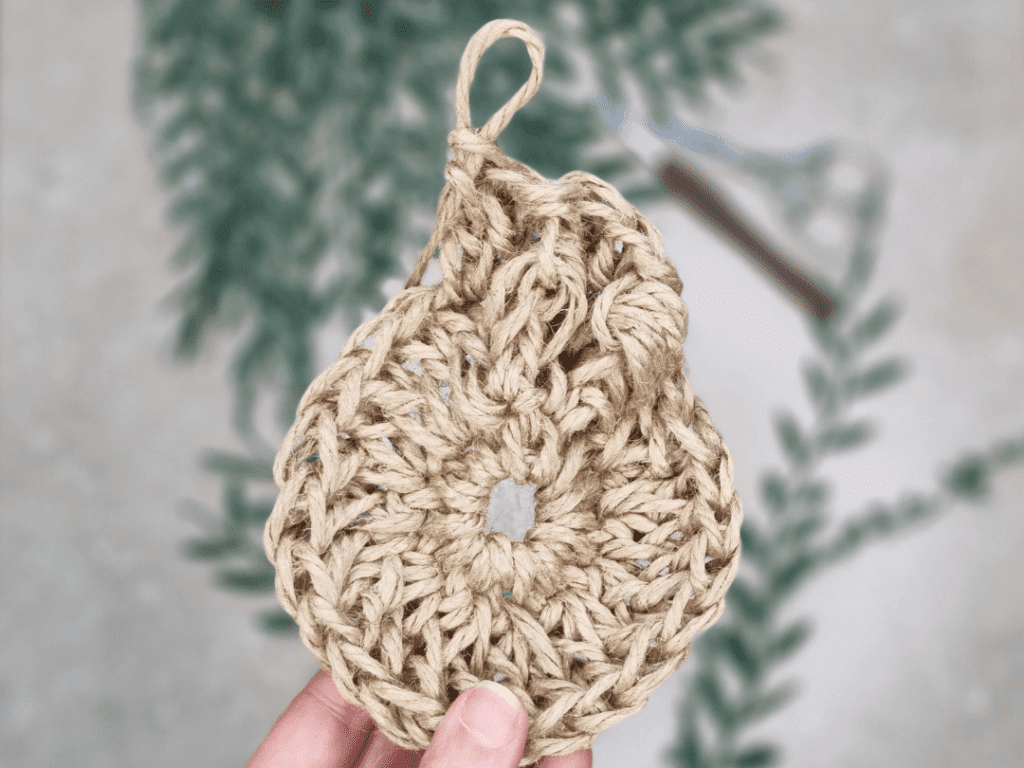
As you can see, the cons far outweigh the pros for this yarn. As I began to crochet with it it was just too difficult to create the textured stitches. This yarn was just way too stiff and not enjoyable to use at all.
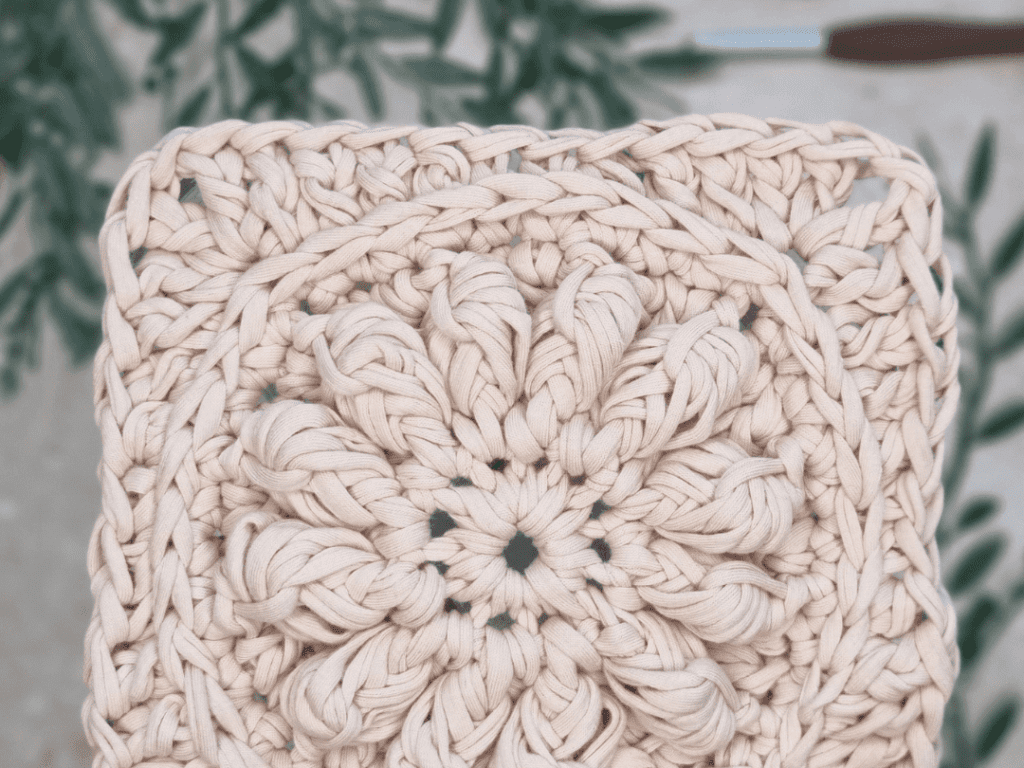
Reduces Waste: Typically, T-shirt yarn is made from recycled materials, specifically old t-shirts or the off-cut selvages of t-shirt fabric. Using it for crochet rugs promotes sustainability, making it a more eco–friendly choice.
Home-made: You can make T-shirt yarn at home from second-hand or unused T-shirts.
Comfortable: T-shirt yarn is usually soft and has a smooth texture, which can make the crocheted rug feel comfortable underfoot.
Inconsistent Colours: Even if you buy the same colour, from the same store, all at the same time, you may not get a consistent dye lot across the entire order. The yarn is often made from off-cuts of t-shirt fabric rather than being specifically made for yarn.
Untidy: Crocheting t-shirt yarn can twist and stretch, creating a messy, untidy look to the rug, especially along the edges.
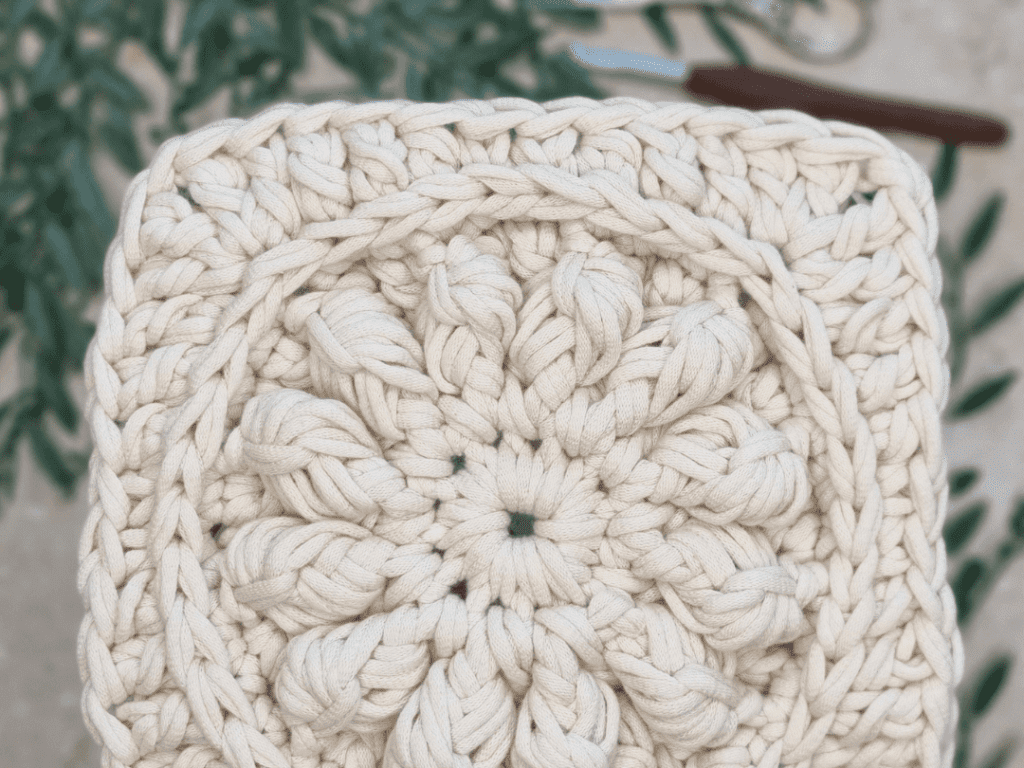
Easy to crochet: Tube yarn manufacturers usually make it from soft, plush materials that crochet smoothly and easily glide off the hook.
Comfortable: The softness of the yarn creates a rug that is soft to sit on or walk on with bare feet.
Limited Colour Range: Tube yarn is not particularly popular and therefore does not have a wide colour range compared to other yarns.
Frequent Adjusting: Tube yarns are soft and stretchy which creates a floppy rug with little structure. You may need to frequently adjust your rug to make it sit neat and flat.
As you can see, there is no 1 ‘best yarn’ for a crochet rug, the best yarn for your rug depends on your priorities. Here are my yarn fibre recommendations for different priorities.
Largest Rug – Choose a braided cotton or polyester cord. Your rug will be heavy, but a 5 or 6 mm cord will give you a rug that will suit a large area like a living room.
Easiest to Crochet – If soft and smooth crocheting is your priority then I recommend using 2 strands of acrylic yarn. Tube yarn is also very easy to crochet, but will cost more than acrylic yarn.
Cheapest – Use your stash! Or if you’re happy to buy some new yarn, acrylic or a cheap twisted macrame cord are the best options. Acrylic will give a soft rug, whereas macrame cord will give great stitch definition.
Environmentally Friendly – Choose a natural fibre such as cotton or wool. The level of environmentally friendliness will depend on which brand you choose, but there are organic, recycled and regenerated options available. T-shirt/jersey yarn is a cheaper alternative.
Functionality – For a bath mat, cotton is the best option due to it’s water absorbency. For noise absorbency a larger rug will absorb more sound so I recommend using a thick cotton or polyester cord.
Hypo-Allergenic – Most people consider cotton the best option for those with allergies due to its low chance of irritation. This may vary between individuals.
Decoration – Looking pretty is where a Floornament rug design shines! I use braided cotton cord for all my design. Not only does cotton give great stitch definition, a rug made from cotton requires less adjusting to look and stay neat and flat.
Softness – An acrylic rug made from 2 strands of yarn gives a nice rug to sit and walk on.
Please note that a crochet rug made from any fibre may require some form of non-slip underneath it if used on hard surfaces.
Which fibre are you going to use for your next floornament?

Hi, I’m Andrea!
I am a wife and mum of 6 kids.
I love to camp, eat chocolate and I’m addicted to crochet!
Floornament was born out of a love of crochet and a desire to create crochet patterns so that others can decorate their home with beautiful crochet floor rugs.
FOLLOW ME
Take me to…